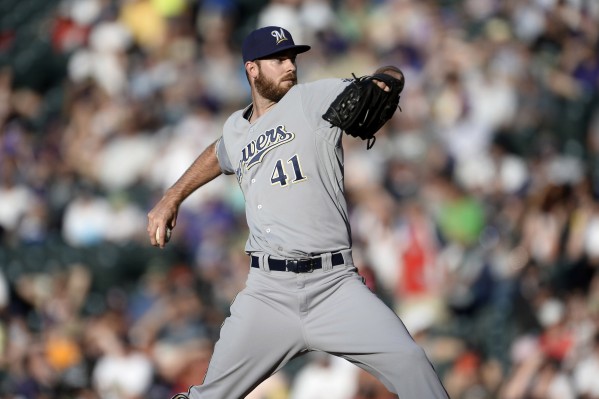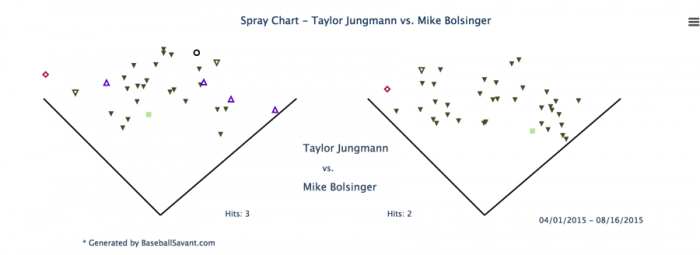Taylor Jungmann has been one of the few relative bright spots in a disappointing season for the Brewers. The 25-year-old righty has posted 1.7 WARP in just 74.3 innings, which could be extrapolated over five wins in a 180-inning season. Obviously, this pace is unsustainable and not reflective of his true-talent level, as our own J.P. Breen explained earlier this season.
His overall production, however, is not the interest of this article. Instead, I will be analyzing one specific aspect of his season — his batted-ball profile. Jungmann has shown an unreal ability to limit home runs, despite not being an extreme ground-ball pitcher. Through August 16, he ranks first in home runs allowed per nine innings (among the 147 pitchers with at least 70 innings) but just 45th in ground-ball rate.
The first order of business is establishing how rare and difficult this feat actually is. Six of the top nine pitchers in home-run rate also rank in the top 30 in ground-ball percentage (only Zack Greinke, Lance McCullers, and Jungmann are outside the top-30). If those admittedly arbitrary cutoff points aren’t convincing, however, one doesn’t need to look further than a basic correlation analysis. Among the 147-pitcher sample mentioned above, the correlation (which is measured on a scale from -1 to +1) between home-run rate and ground-ball rate is a remarkable -0.98.
All of that means that as home run rate increases, ground-ball rate decreases at a nearly similar rate. This is not inherently surprising; pitchers who get more ground balls are unlikely to give up home runs as often because — surprise! — ground balls don’t go over the fence very often. But it does serve to emphasize the bizarre nature of Jungmann’s profile.
He has been very successful because only 3.2 percent of fly balls he has allowed have gone over the fence. The question, then, is whether this phenomenon is likely to continue. On the surface, the answer is likely “no.” Underlying facts of batted-ball data are more likely to be indicative of true talent then pure result; this is why we use metrics such as BABIP to determine whether a player’s batting average is likely to sustain.
A more detailed look at Jungmann’s fly ball data paints an expectedly pessimistic portrait. Despite allowing the fewest home runs per inning in baseball, the average hit off of him travels roughly 296 feet, which ranks 51st of 189 pitchers with at least 100 qualified at bats (according to Baseball Savant). This is by no means a disastrous rate — such notables as Chris Sale and Felix Hernandez rank behind him — but it does indicate that Jungmann is unlikely to sustain this incredible home-run rate.
For comparison, the following chart shows Jungmann’s fly ball spray chart next to Mike Bolsinger’s, who ranks second in home-run rate. As you can see, Jungmann’s fly balls are clustered further from home plate than are Bolsinger’s.
His performance this year has been quite good, but his strikeout and walk rates are roughly average. He has been able to combat his lack of dominance in those areas by keeping balls in the park, but this article has demonstrated that that is likely not sustainable. He doesn’t look likely to fall off a cliff, but he is probably merely a back-of-the-rotation starter and not much more.

